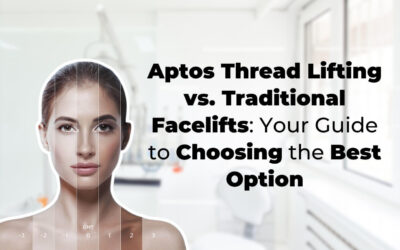With the advancement in research and technologies in the field of aesthetic treatments, there has been a wide range of options available to cater to different skin types, concerns, and goals. One of them includes Sculptra and fillers.
While both aim to rejuvenate the skin and combat signs of ageing, understanding the characteristics of these two is crucial for making informed decisions about which one is right for you.
In this article, we will be exploring the key differences between the NEW Sculptra and fillers so our readers are informed and able to explore more treatment options.
Sculptra vs. Fillers
Sculptra is a biostimulatory injectable composed of poly-L-lactic acid (PLLA), a substance that stimulates collagen production in the skin. Unlike traditional fillers, Sculptra does not provide immediate volume but instead works gradually to enhance skin texture and firmness over time.
Fillers, on the other hand, refer to a broad category of injectable substances used to add volume to specific areas of the face. Common filler ingredients include hyaluronic acid, calcium hydroxylapatite, and poly-L-lactic acid. Fillers are often used to reduce the appearance of wrinkles, restore facial volume, and enhance features such as lips and cheeks.
How They Work

Sculptra works by triggering the body’s natural collagen production process. When injected into the skin, PLLA microparticles stimulate fibroblasts, cells responsible for collagen synthesis. Over time, this leads to an increase in collagen levels, resulting in improved skin texture, volume, and elasticity.
Fillers, on the other hand, work primarily by providing immediate volume to targeted areas. Depending on the type of filler used, the substance may attract water molecules to add hydration and plumpness to the skin, or it may stimulate collagen production for longer-lasting effects.
Primary Differences Between Sculptra and Fillers

- Mechanism of Action: Sculptra stimulates collagen production over time, resulting in gradual improvements in skin quality. Fillers provide immediate volume by physically filling in wrinkles and adding contour to the face.
- Duration of Results: Sculptra offers long-lasting results, with effects lasting up to two years or more as collagen continues to regenerate. Fillers typically last anywhere from six months to two years, depending on the type of filler used and the area treated.
- Naturalness of Results: Sculptra produces natural-looking results that enhance the skin’s intrinsic beauty by restoring lost volume and improving texture. Fillers can sometimes lead to a more noticeable “filled” appearance, especially if overused or injected improperly.
Comparison of Injection Techniques and Sessions Required

Sculptra typically requires multiple treatment sessions spaced several weeks apart to achieve optimal results. This approach allows for gradual collagen stimulation and ensures natural-looking outcomes. The number of sessions needed varies depending on the patient’s response to treatment and the extent of correction desired.
Filler treatments, on the other hand, often provide immediate results with just one session. However, touch-up sessions may be recommended to maintain the desired volume and contour over time. The duration between filler treatments varies depending on the type of filler used and the patient’s unique physiology.
Recovery Period and Potential Side Effects

Following Sculptra or filler injections, patients may experience some temporary swelling, redness, or bruising at the injection sites. These side effects typically subside within a few days to a week, and patients can usually resume their normal activities immediately after treatment.
In terms of downtime, Sculptra and fillers generally have minimal impact on daily routines. However, it’s essential to follow any post-treatment instructions provided by the healthcare provider, such as avoiding strenuous exercise and sun exposure, to optimise results and minimise the risk of complications.
While both Sculptra and fillers are considered safe and effective when performed by experienced professionals, patients need to discuss any concerns or potential side effects with their healthcare provider before undergoing treatment. With proper care and monitoring, the majority of patients can expect a smooth recovery and satisfying outcomes from their Sculptra or filler treatments.
Importance of Consulting with a Qualified Healthcare Provider

Before undergoing any aesthetic procedure, including Sculptra or filler treatments, it is crucial to consult with a qualified healthcare provider. These professionals, often dermatologists or plastic surgeons, possess the expertise and experience necessary to assess your unique needs and recommend the most suitable treatment options.
At Dr Abby Clinic, our LCP-certified professionals will evaluate your skin condition and aesthetic goals to determine whether Sculptra, fillers, or a combination of treatments is the best approach for you! This personalised assessment ensures that the chosen treatment aligns with your individual needs and concerns, optimising the likelihood of achieving satisfactory results.
Book a consultation with us today to achieve the best version of you from the inside-out!





